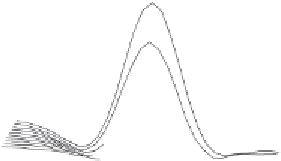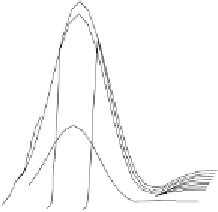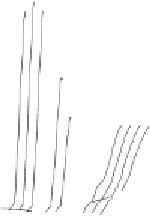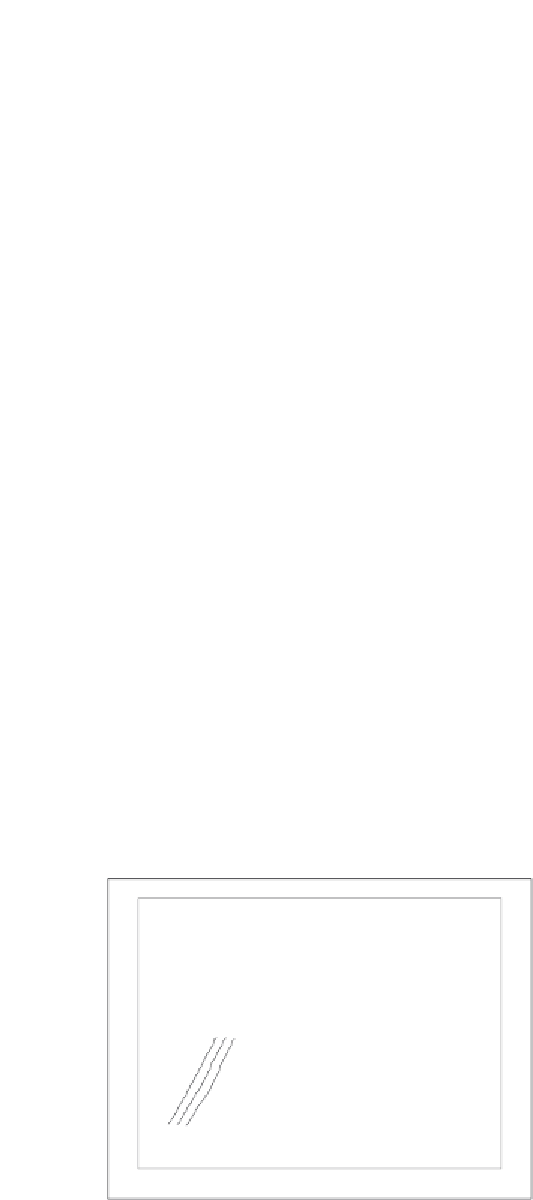Image Processing Reference
In-Depth Information
interest in the Laplacian operator abated with rising interest in the Marr-Hildreth approach,
a nonlinear Laplacian operator was developed (Vliet, 1989) and shown to have good
performance, especially in low-noise situations.
4.3.3
The Marr-Hildreth operator
The
Marr
-
Hildreth
approach (Marr, 1980) again uses Gaussian filtering. In principle, we
require an image which is the second differential ∇
2
of a Gaussian operator
g
(
x
,
y
) convolved
with an image
P
. This convolution process can be separated as:
∇
2
(
g
(
x
,
y
) ∗
P
) = ∇
2
(
g
(
x
,
y
)) ∗
P
(4.24)
2
(
g
(
x
,
y
)) and convolve this with the
image. By further differentiation of Equation 4.15, we achieve a
Laplacian of Gaussian
(LoG) operator:
Accordingly, we need to compute a template for ∇
2
2
gxy
x
(,
)
gxy
y
(,
)
2
gxy
(,
) =
U
+
U
x
y
2
2
gxy
x
(,
)
gxy
y
(,
)
=
U
+
U
x
y
2
2
2
2
-(
x
+
y
)
-(
x
+
y
)
2
2
2
y
2
x
2
2
e
e
2
2
=
- 1
+
- 1
(4.25)
2
2
2
2
-(
xy
+
)
2
2
( +
xy
)
- 2
1
2
=
e
2
2
2
This is the basis of the Marr-Hildreth operator. Equation 4.25 can be used to calculate
the coefficients of a template which, when convolved with an image, combines Gaussian
smoothing with second-order differentiation. The operator is sometimes called a 'Mexican
hat' operator, since its surface plot is the shape of a sombrero, as illustrated in Figure
4.26
.
LoG (4, 31)
Figure 4.26
Shape of Laplacian of Gaussian operator





































